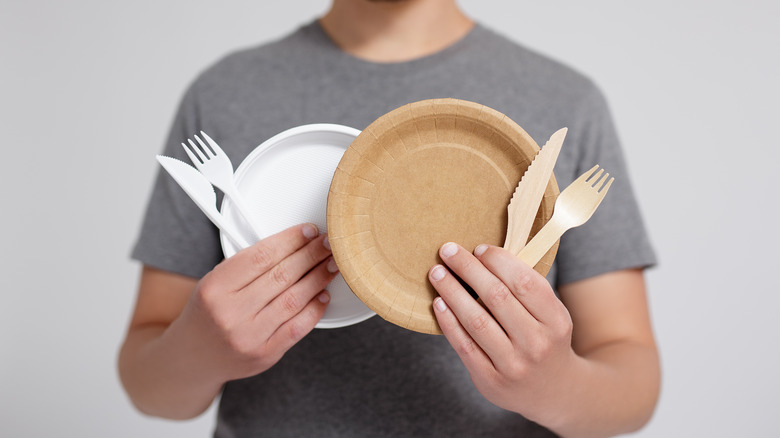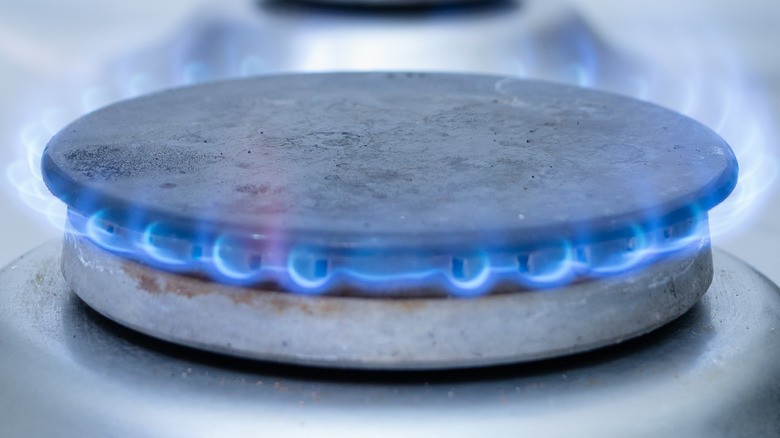Why You'll Never See Professional Chefs Buy Plastic Utensils
Plastic utensils are an easy alternative to silverware when it comes to party snacks, food trucks, and other methods of fast-casual eating that can get unruly when it comes time to wash reusable utensils. But in terms of sit-down restaurants, from fine dining to your local bar and grill, chefs tend to not take to plastic utensils or even wood-based single-use alternatives for obvious reasons.
Food that is served fresh and not of the handheld variety demands utensils that won't melt and the build quality of plastic utensils sold en masse is usually poor enough to allow them to snap, for instance, when you are cutting into a steak. An impractical prospect for fine dining is where the tip of the fork could end up snapping off smack in the middle of your filet mignon or the knife is too dull to cut into a roasted tomato or a thick wedge salad. Restaurants would also be at the mercy of specific brands producing harder plastic and still run the risk of creating an unpleasant experience for customers, not to mention the fact that plastic cooking utensils would melt during food preparation.
Turning down the heat for plastic is too big a sacrifice
Plastic, no matter how thick, will melt when exposed to heat so chefs using plastic cooking utensils would need to literally turn down the heat of their menus to accommodate a prospect that isn't appealing given the prevalence of open fires and gas stoves in cook-to-order eateries. Food would need to be served lukewarm because of the assortment of plastic spatulas and other utensils unable to handle the fire. The sheer waste produced from accidentally melting plastic utensils and having to buy new ones would make it far less worth it for chefs to use these tools. Short-term savings would become long-term losses.
All this isn't to say plastic utensils are completely obsolete. They have their uses, especially in home kitchens with electric stoves and in food establishments providing fast-casual fare. But for chefs in even middle-tier sit-down restaurants, the risk is too great that something goes wrong and this applies to the nth degree for fine dining establishments that pride themselves on a seamless dining experience. Ultimately no plastic convenience is going to be allowed to endanger that selling point.

